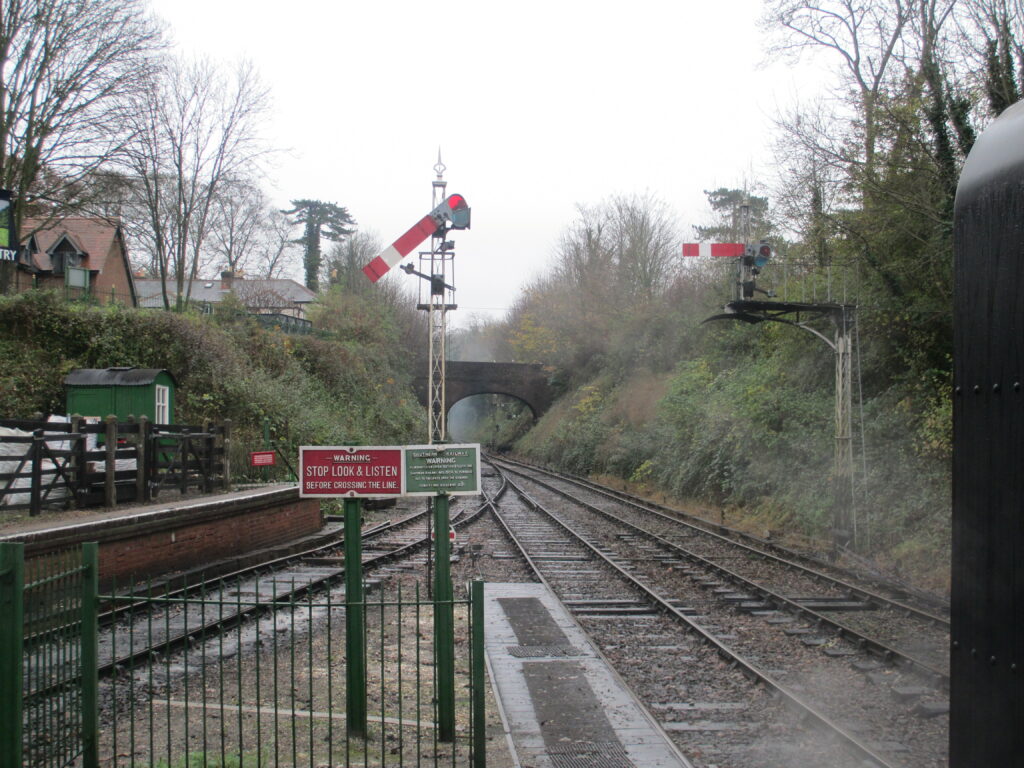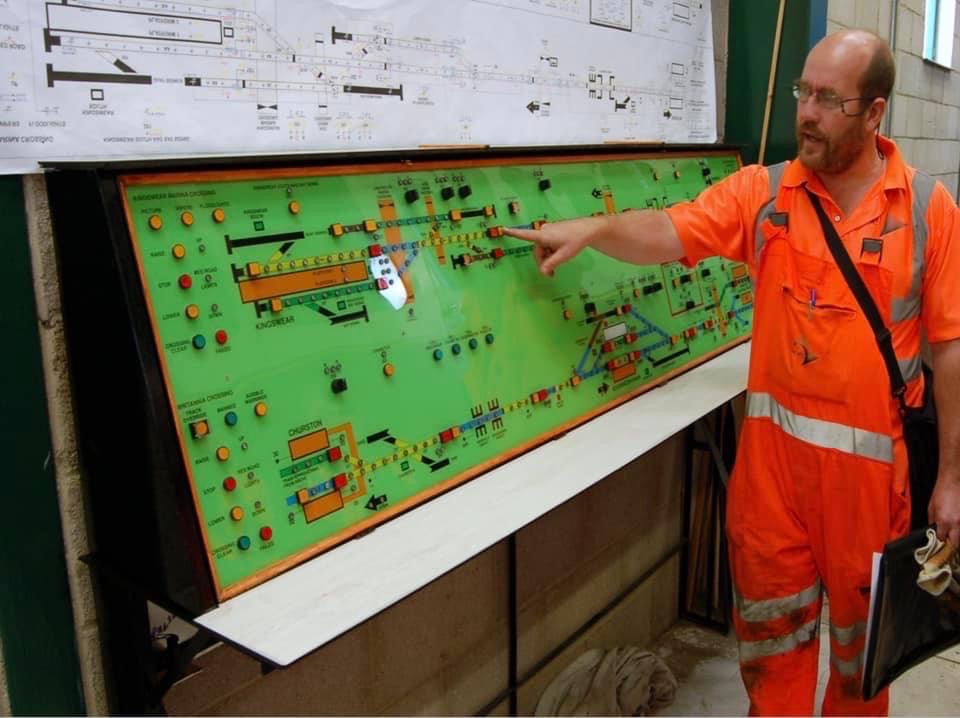Rail Engineer frequently features articles on new and innovative signalling systems for both main lines and metros. ETCS (European Train Control System) and CBTC (Communications Based Train Control) represent the generation of technology that will eventually control railways in the UK, Europe, and the wider world. Even without these latest systems, resignalling projects continue to use more traditional solutions but with many innovative features to reduce cost and enable renewals to take place in a timely manner.
The engineers and technicians who design, manufacture, install, test, and commission such systems must be competent in the work they do and many of them have to hold a proficiency licence in accordance with the IRSE requirements.
So far, so good, but what about the heritage sector? Many of these lines need signalling systems to control train movements and operations and require considerable knowledge and expertise from both paid staff and volunteers who give their time to ensure successful and safe railways. A recent talk given by the IRSE Minor Railways Section explained how the heritage community works together to provide the necessary technology and competence.
Scope and volume
The number of heritage railways in the UK has proliferated over the years and there are now about 150 lines spread across all parts of Britain, plus a further 150 miniature lines in parks and gardens. Ignoring the latter category, although a few of these do have significant signalling systems, most of the others, which include both standard and narrow gauge, carry passengers for many miles, and contain passing loops, level crossings, multi-platform stations and more than one train in operation on busy days. Although speeds are much less than on a main line, the number of passengers carried, especially during special event days, can number into the thousands.
All this requires a detailed knowledge of railway operations, the signalling of trains, and the safe management of stations.
On the engineering side, standards have to be in place for track and rolling stock which are generally in line with similar requirements for secondary and branch lines. But for signalling, the scope is much more varied and can embrace technology from the Victorian era right through to modern day electronics and computing. So how is all this managed to ensure an efficient and safe means of operation?
Types of signalling
In the main, most of the larger heritage lines have signalling systems comprising traditional signal boxes with lever frames, semaphore signals and points moved by rodding from the signal box. These require a knowledge and skill set for the locking within the frame, the installation and compensation of rodding runs, the provision of facing point locks, and the erection and sighting of signals including the regulation and provision of wire runs. Add to this the block shelf with block instruments and bells, the communication links to adjacent boxes, the need for track circuits, and the provision of a signal box diagram, all make for an expanding knowledge for the staff and volunteers involved.
It does not stop there. Many of the lines have relay interlockings, electric locks and circuit controllers on levers, power operated points and signals including colour lights and the ability to switch boxes out during light periods of traffic. All these require a power supply involving batteries and chargers.
Then there are level crossings. On the main line, traditional gates have largely been replaced by lifting barriers but on heritage lines wooden swinging gates prevail. These are often hand operated, but some examples exist where the gates are swung from a large wheel in the box and the associated mechanical connections.

Just occasionally, heritage lines branch out into the latest technology and use both radio and IT skills to develop systems that enable low cost and efficient operations. An example of this is the Token Exchange by Random Numbers (TERN) used on the Ravenglass & Eskdale narrow gauge line. The control of train movements is carried out entirely by radio with a clever way of using a numbering system to receive and deliver tokens. On the Swanage Railway, the latest in level crossing technology is used at Norden by employing the Schweizer VaMOS system that utilises a standardised Programmable Logic Controller (PLC) to control the barrier sequencing and flashing lights.
One must not forget telecommunications. Heritage lines are as dependent as main lines on good communications between signal boxes, stations, and running sheds. Some still utilise electromechanical Strowger exchanges (another technology that has virtually died out in the country at large), often with just one exchange to cover the entire line but sometimes with tie lines to connect different exchange locations. Many signals, if remote from the box, require SPTs and an associated concentrator.
A mention must be made about miniature lines. Many of these are operated on a commercial basis and are managed by business people. Their knowledge of modern-day electronics and computing is usually pretty good, and they apply this knowledge to how the railway should be run. As such, traditional signalling techniques are not usually applied, being replaced by computer programming on PLCs, home-built control panels, and bits and pieces of electrical equipment acquired from various sources. An example is a car windscreen wiper motor being used for the movement of points. With even lower speeds, the risks to passenger safety are very small and if a derailment occurs, you just lift the locomotive or carriage back on!
Acquisition of equipment
With the renewal of signalling systems on the main line, a veritable ‘gold mine’ of equipment is made redundant. The simple stuff of point machines, signal posts and arms, block instruments, and ground frames have been easily acquired by the heritage lines when signal boxes are replaced on Network Rail or British Rail before that. In some cases, complete signal boxes have been dismantled, transported to a new site, and re-erected. Such enterprise requires the participation of civil and electrical engineers as well. An interesting example of re-use is the recovery of the former signal box at Sprotborough on the erstwhile Hull and Barnsley railway that had spent years as a garden shed on an allotment. This is now being installed on the Yorkshire Wolds Railway.
Not all equipment is second hand. The design for an internet-connected single line token machine by Park Signalling represents a commercial company having an eye on the heritage sector, where a new concept can be used to obviate the need for railways to invest in expensive lineside cabling. A completely new panel has recently been provided at Brittania Crossing near to Dartmouth on the line to Paignton.
Some railways invest in modern off-the-shelf telecommunications equipment which is easy to use and install, and avoids the need for technicians with skills to set up uniselectors and two motion switches associated with Strowger equipment.
Where do the people come from?
There is no single answer to this. Many of the signal engineers and technicians work for Network Rail or the signal supply industry and volunteer their spare time because of their love for the job. Others are ex British Rail, Network Rail, or are industry engineers who have retired but wish to keep working in an enjoyable environment and where their hard-won skills can still be put to good use. A third category are people from all walks of life who have an interest in railway signalling and yearn to get their hands dirty.
A common factor for all of these is enthusiasm in what is normally a non-pressurised environment. Maintenance work is carried out generally when trains are not running, as are any new projects involving signalling alterations. Failures when trains are running require a prompt response so a signalling expert is usually on hand to put things right. Sometimes revised track layouts require new signalling designs having to be created, involving the production of new control tables, circuitry, locking charts, and such like. Much of this work can be carried out in a home environment.

Training and competence
With this wide mixture of people, how does a railway ensure that work is carried out correctly and to the required standard? There is recognition that enforcing any form of licensing scheme into a largely volunteer workforce is a non-starter. However, competence has to be assured. This was one of the reasons why the IRSE Minor Railways Section (MRS) was created with the aim of acquiring, assessing, and passing on of knowledge, standards, and methodology. Nine people were on the initial committee, but it has grown since then.
Many guidance documents have been produced and these can be accessed from the IRSE website. Park Signalling is one of the sponsors for these documents. Lots of networking takes place including on Facebook and YouTube forums, and 180 videos covering various signalling layouts are available on YouTube. A training course takes place once a year arranged via Signet Solutions for which engineers and technicians on heritage lines can attend at very modest prices.
An important element of competence acquisition is going out to see how other heritage lines set about the provision of signalling. Section visits have been made to many lines around the UK including the South Devon, Welsh Highland, Ffestiniog, Bluebell, Keighley & Worth Valley, Ravenglass & Eskdale, North Norfolk, and Severn Valley, the latter being a favourite location for the Section to hold its AGM at the Kidderminster headquarters. All these lines have signalling peculiarities, especially those that have a connection (sometimes with running rights) on to Network Rail infrastructure.
Clearly those staff who have or have had British Rail or Network Rail experience will lead the training of others and their specialisms are much valued. Most of the lines have been in existence for 50 years or more and the knowledge acquired during this period is extensive. No major incident due to a signalling failure has ever been recorded, so the track record is excellent.
Liaison with the authorities
Pragmatism is the order of the day and good communication exists with the Office of Road and Rail (ORR). It is accepted that the Railways and Other Guided Transport Systems (ROGS) rules do not generally apply to heritage lines in the same way that they have to be interpreted for main line and metro railways. A guidance document on competence has been produced which has been endorsed by the ORR. Sometimes compliance with national rail requirements must be observed. Level crossing signage and telecommunications is one such area where changes to improve the understanding of both pedestrians and road vehicle users are being trialled and are likely to go forward for universal adoption.
Accidents do occasionally happen on heritage lines (sadly and very rarely with fatalities) and reporting such incidents to the RAIB must happen in the same way as if it were a main line. Any resultant findings and recommendations will be issued into the public domain from which other heritage lines will take note. Signalling will occasionally feature in these reports, but this is rare.
In summary
Heritage lines in the UK are a major part of Britain’s leisure industry. Each year heritage railways attract 13 million visitors each year, most of whom take a ride behind a steam engine, often in beautiful countryside every year. They assume that the rail operation and the associated signalling will keep them safe. So good are the standards, maintenance, and workmanship that they need not worry.
The camaraderie amongst those involved is very good and sometimes expands to overseas rail heritage lines. International technical visits are arranged from time to time, the Netherlands being a favourite venue. Long may all of this continue so that our children and grandchildren can learn how railways were operated in the past and enjoy the experience.
Thanks are recorded to Dominic Beglin for giving the talk to the IRSE L&SE Section and for supplying many of the photographs.

